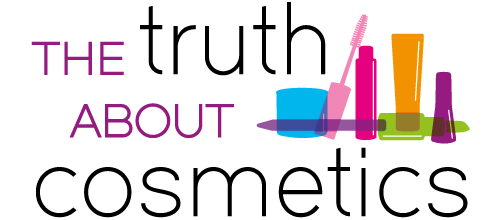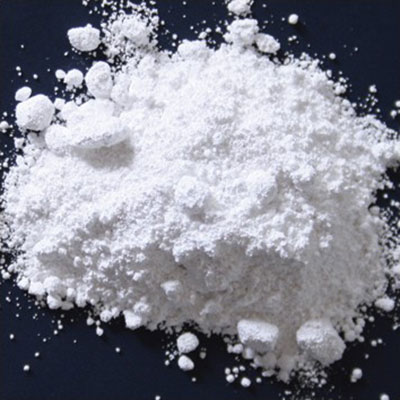PFAS – Forever Chemicals
In this society concerned by low quality items, that sometimes don’t even last a year, we usually appreciate « things that last forever »… except when it comes to chemicals, probably…In this article, we will be tackling the question of a specific category of substances, PFAS, sometimes referred to as ‘forever chemicals’ because of their persistence in the environment.
PFAS cosmetics Europe : France lawmakers vote to ban ‘forever chemicals’
This week on Thursday, 04/04/23, French MPs approved the first reading of a bill aimed at restricting the manufacture and sale of non-essential products (except in cooking utensils) containing PFAS or « forever chemicals », marking a significant step in environmental health protection.
PFAS -Those widespread « Forever Chemicals »
PFAS (per-and poly fluoroalkyl substances) is a chemical family consisting of at least 5,000 individual substances. As a result of their widespread use and persistence, PFAS are being found to be present in many different environments.
« Forever Chemicals » PFAS in cosmetics
A study published in 2021 in Environmental Science & Technology Letters also linked the general problematic of PFAS to the cosmetic sector. The researchers found high fluorine levels—indicating the probable presence of PFAS—in most waterproof mascara, liquid lipsticks, and foundations tested :The problem with cosmetic products is that on the one hand some products intentionally include ingredients that qualify as PFAS (see the list of INCIs below) and on the other hand PFAS are also sometimes found in analyses of conventional cosmetic products, without being clearly displayed on the products, according to a Green Science Policy Institute study on PFAS dating from June 2021.
« Many cosmetics sold in the United States and Canada likely contain high levels of per- and polyfluoroalkyl substances (PFAS), a potentially toxic class of chemicals linked to a number of serious health conditions, according to new research from the University of Notre Dame. Scientists tested more than 200 cosmetics including concealers, foundations, eye and eyebrow products and various lip products. According to the study, 56 percent of foundations and eye products, 48 percent of lip products and 47 percent of mascaras tested were found to contain high levels of fluorine, which is an indicator of PFAS use in the product. The study was recently published in the journal of Environmental Science and Technology Letters. » *
Some cosmetic brands intentionally add PFAS to make cosmetics last longer and spread easily. PFAS can also sometimes be found cosmetics through cross-contamination, such as machinery used in manufacturing or plastic packaging that contains PFAS.

Other Studies also reveal the presence of PFAS in different everyday products
In addition to that, another study by Katherine E. Boronow and her team, published in the Journal of Exposure Science & Environmental Epidemiology in 2019, for instance reveals the presence of « perfluoroalkyl » and « polyfluoroalkyl » substances in certain dental products products. In dental floss, in particular, although it is not the only source of PFAS, as the study makes clear.
Environmental Concerns
First of all, keep in mind that PFASs, also called « Forever Chemicals », are among the synthetic substances that are are considered (among other things) extremely problematic from an environmental point of view. Some PFAS have recently made the headlines, as they can now even be traced in rainwater, making it ‘unfit for consumption’, according to recents studies*.
Let’s get back to the basics – What exactly are PFAS?
PFASs, poly- and perfluoroalkyl substances, are chemical substances consisting of about 4,000 to 6,000 different components. PFASs are persistent, rapidly spreading and not, or only very partially, biodegradable. They can be found in textiles, food packaging, cosmetics, pesticides, kitchen utensils, varnishes and many other everyday products.
Which cosmetic products can contain PFAS ?
What are PFAS used for in cosmetics?
Basically, PFAS are used in cosmetics and beauty products, to condition and smooth the skin, making it appear shiny, or to affect product consistency and texture. In other products such as dental floss, it is the waterproofing properties that comes into play.

All things considered, what are the health risks?
Because Perfluoroalkyl compounds are not destroyed in the human body and bioaccumulate, they increasing health risks. Several PFASs are strongly suspected of being toxic, with health risks to humans, animals and the environment. These include effects on hormone balance (so-called endocrine disruptors), the immune system, reproduction and unborn child development. The exact properties differ for each specific PFAS. These substances can accumulate in the human body, in animals and in plants. PFASs can enter the human body through food, drinking water, inhalation or the skin.

Identified as problematic by the french authorities already in 2019
Previously, in September 2019, Santé publique France published a study on « the impregnation of the French population by perfluorinated compounds« , recalling how, since the 1950s, these man-made substances have been used in « numerous industrial applications and in everyday consumer products », including cosmetics, as recalled in this article (in french)

And what about the laws in Europe?
The production and use of various PFAS compounds is clearly restricted by European directives. In the coming years, various applications containing PFAS will be further restricted. BUT it can actually take decades between the identification of the problem, partial restrictions phase and the final ban of components or classes of components.For instance, in some countries, retailers take actions, -like in Denmark- before the official legal restrictions, – which often take years to implement. In Denmark, for example, the second largest food retailer in Denmark, the Coop Group, the world’s largest retail group, immediately stopped all purchases of cosmetics and personal care products containing PFAS (polyfluoroalkyl and perfluoroalkyl) compounds.
« The ban applies to the group’s own brands as well as to international brands. Sales of products still containing PFAS will be phased out by 1 September 2019 at the latest. Coop also calls on the Danish Minister for the Environment and Food to propose a law against PFAS in cosmetic products. »
What are the different INCI names of the PFAS components used in cosmetics?
Spotting Hidden Peas
Therefore, to minimize your contact with PFAS, it’s necessary to educate yourself about the common cosmetic ingredients that may be contaminated. Look out for ingredients such as Teflon, PTFE, or any vague mention of « fluorinated » compounds on product labels. Identifying these hidden peas will empower you to make informed buying decisions and ensure the products you choose are free from harmful chemicals.

Which cosmetic ingredients are identified as PFAS ?
INCI
- PFTE (Teflon)
- Perfluorononyl dimethicone
- Perfluorononyl triethosyxilane
- Ethyl perfluorobutyl ether
- Perfluorotetralin,
- Polyurethane-27 / Polyurethane ( verifier microplastique ?)
- Polyperfluoroethoxymethoxy Peg-2 Phosphate
- Octafluoropentyl Methacrylate
- Pentafluoropropane
- Methyl Perfluorobutyl Ether
- Perfluorononylethyl Carboxydecyl Peg-10 Dimethicone
- Perfluorodecalin
- Polyperfluoroethoxymethoxy Difluoroethyl Peg Phosphate
- Perfluorodimethylcyclohexane
- Perfluoroperhydrophenanthrene
- PEG-10 dimethicone
- C9-15 fluoroalcohol phosphate
- Perfluorohexane

However, the problem of PFAS in consumer goods goes of course far beyond the cosmetics sector, but the industry is part of the problem and must take its share of responsibility to ban these components which are absolutely not indispensable. The natural and organic cosmetics sector is proof of this, as these components are simply not part of the « authorised » components defined by the various labels for natural and organic cosmetics.
More ressources
It would also seem that the subject of PFAS as a whole is more widely discussed in English-speaking or Nordic countries, for example with the following resources.
➡️ Dark Waters: a film to warn about perfluorinated chemical pollution
➡️ EWG in the US questioning the presence of Teflon in our cosmetics
➡️ In Denmark, an official 2018 study by the Danish Environmental Protection Agency on the issue of PFAS in cosmetics

Get informed & take action
It is therefore also up to us to raise this issue as informed consumers and to ask brands – also from the cosmetics sector – to review their formulations as soon as possible to ban PFAS from their products. Official bans through national or international legislation will take far too long to counteract this global problematic.
******
Find other similar articles on cosmetic ingredients the Website
Conclusion
As shown above : in a world where cosmetic products can sometimes contain harmful forever pollutants like PFAS, it’s critical to be vigilant about the ingredients we expose ourselves to. By understanding the dangers of PFAS and educating ourselves about common cosmetic ingredients, we can avoid these undesirable « PFAS » in our beauty routine. Whether it’s choosing clean or opting for natural, organic and certified alternatives (by serious labels), taking proactive steps toward a healthier beauty regimen is essential.



















